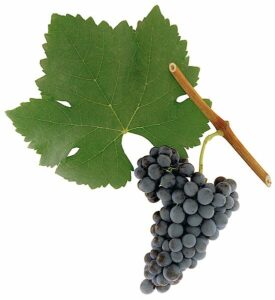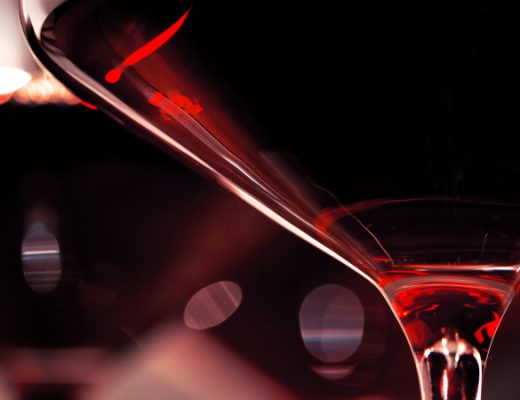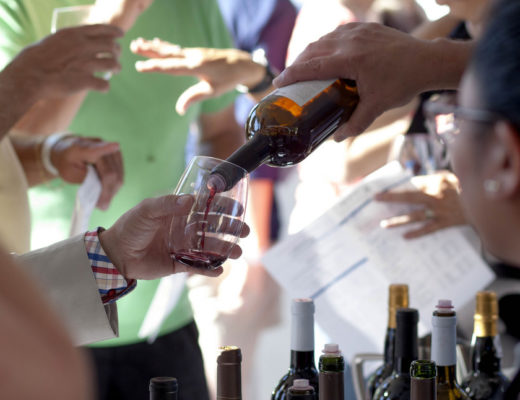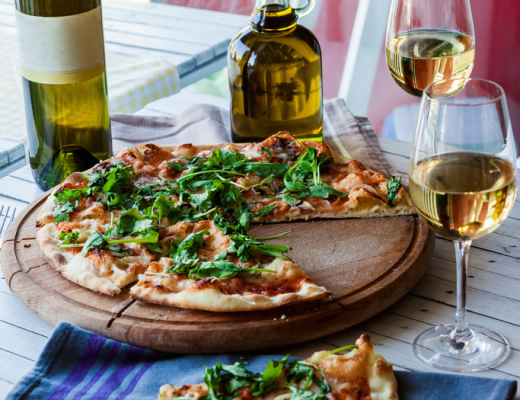Bruce Neyers sat at one end of a long table, learning French verbs from a soft-spoken farmer named Marius Gentaz. They were sharing a plate of veal chops and drinking with about a dozen others at Le Beau Rivage, in Condrieu, working their way through a few bottles of white wine before venturing on to headier reds. The Rhône River—drawing glacier melt from the Swiss Alps down through Geneva, Lyon, and Avignon to the Mediterranean—rolled by just a few feet away. René Rostaing sat at the other end of the table, charming a group of American wine buyers who had ventured to this sleepy valley to try to get their minds around a subject that Rostaing and Gentaz, on that winter evening in 1996, knew better than probably anyone alive: Syrah.
At the time, interest was exploding in California. Widely seen as the next grape to overtake Cabernet Sauvignon as kingpin, domestic Syrah plantings skyrocketed with a tenfold increase in acreage over the next five years. From 1990 to 2005, Syrah production multiplied more than 250 times, from 586 grape tons crushed to nearly 150,000. In 2008, domestic Syrah sales were neck and neck with Pinot Noir, behind only Merlot and Cabernet in varietally labeled red wine.
But just as Syrah’s great U.S. expansion began, the project’s commercial demise was already underfoot. Before it ever ascended, Syrah stalled, then skidded, then careened off the far side of a cliff. From 2008 to 2010, Syrah sales dropped by a third while Cabernet and Pinot Noir sales grew by 25% and 38%, respectively. In 2015, Syrah didn’t register in the top ten types of wine sold in the United States, bested by both Malbec and Riesling. In 2019, fewer than 100,000 tons of Syrah was crushed in California, down 35% from its peak.
It’s hard to state how unusual such a dramatic shift is in wine. Trends come and go. But only Syrah has experienced such devastating whiplash. By 2010, with sales smoldering, critics had deemed Syrah dead on arrival. Obituaries ran in The New York Times, The San Francisco Chronicle, Wine Spectator, and a bevy of outlets in between. Critics pointed to the onslaught of cheap Shiraz, the overnight sensation around Pinot Noir, and a misplaced emphasis by U.S. winemakers on maximal ripeness over grace. Syrah’s shot at superstardom seemed finished.
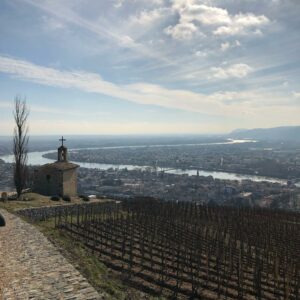
A view of La Chapelle in Hermitage, Northern Rhône Valley
But a decade later, that jagged past seems to be giving way to a promising future. A string of extraordinary vintages in the northern Rhône Valley (Syrah’s spiritual homeplace), starting with 2015, has already cemented that region’s status for a generation of consumers. In the U.S., a small but impressive cohort of Syrah-obsessed winemakers have been finding new and ever more compelling varietal expressions in marginal coastal climates. Even Australian Shiraz has taken a lighter turn, led by an insurgent movement in the Adelaide Hills. Syrah, long misunderstood, now seems poised for a new golden age.
“The future of Syrah in general and Northern Rhône in particular has never looked brighter,” according to Adrien Laurent, export director for Paul Jaboulet Aîné, a seminal northern Rhône domaine. Laurent said that, in addition to Syrah’s well-known misfortunes, it has also lacked the strong U.S. marketing presence of, say, Cabernet or Chardonnay. But today, while a majority of the Jaboulet wines still stay in France, the U.S. is their largest export territory. Sales are climbing, steadily.
Laurent sees an opportunity to leverage their recent blockbuster vintages and drive Syrah to its rightful place at the top. And he isn’t alone.
An Enigma
When Neyers started drinking northern Rhône wines, in the early 1970s, Syrah was something of a joke in his Berkeley circles. “Hermitage” was what Burgundy producers had done to their wines to add color in a spate of disastrous mid-century vintages. For today’s diehard Syrah vintners, the fabled northern Rhône producers from the era between the late 1950s and early 1990s—names like Jean-Louis Chave and Louis Jaboulet of Hermitage, Auguste Clape of Cornas, Gentaz of Côte-Rôtie—serve as characters in an ur-myth of a more authentic, purely traditional, pre-globalized era. But while these men were virtually unknown in America for most of their working lives, by the mid-1990s, things had changed.
For one thing, Kermit Lynch Wine Merchant, on the west coast, and later The Rare Wine Co., on the east coast, had been importing and promoting these wines with slow but steady progress. By the time Neyers sat down with Gentaz that evening, all of the great Rhône wines making their way to Berkeley were under tight allocations and high demand. Additionally, and just as important, winemakers like Pax Mahle and Joseph Phelps had fallen in love with the idea of American Syrah and kicked off the beginnings of a movement.
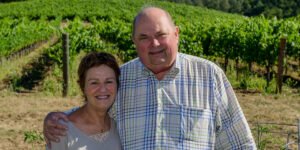
Barbara & Bruce Neyers
Neyers, as Lynch’s national sales manager and as the proprietor of his then-nascent Neyers Vineyards, had already done his part in evangelizing on the subject. But it was in the light of Le Beau Rivage, talking with Gentaz over veal and conjugations of voir, savoir, pouvoir, that Neyers found his true conversion.
“Somebody ordered the ’91 [Gentaz-Dervieux],” Neyers told me. He glanced across the table to gauge Gentaz’s reaction to the order. “You could see just the barest suggestion of a smile as his lips curled a little bit. Or at least I could see it. I thought: I hope it’s a good bottle.” The light was low. Gentaz’s smile could have been a smirk. Or a cringe. The vintage might have fallen dormant, as brooding wines sometimes do between their energetic youthful phase and their more mature, bottle-aged flourishing. Whatever it was, good or bad, Neyers recognized that they were in for a surprise.
“Well, it was more than a good bottle,” Neyers said. “It was the single best bottle of Syrah I’d ever had in my life. You just never look at it the same way after something like that.”
Mesmerized, the group ordered another, then another. The wine was fresh, invigorating, savory, deep, immediate, sustained, and perfectly in sync with both the atmosphere and the food. There must have been dozens of bottles on the Beau Rivage wine list that night that could have had life-changing potential. But there, in the heart of the northern Rhône, at a Michelin-starred restaurant stocking volumes of the region’s greatest expressions, the group of revelers that included two of the most important winemakers in the region’s modern history and one of its greatest proponents in the United States, got stuck on the ’91 Gentaz until they had drunk up an entire case—nearly a tenth of the U.S. allocation. At the end of the night, Neyers remembers looking at an empty bottle, longing for yet more. “I thought: I still haven’t had enough of this wine!”
That’s the thing about Syrah. It’s an absolute thrill of a wine that at its best seems to have no limit. While the grape may have developed a reputation for loudness and sameness, mostly due to the overripe mass-production that proliferated for far too long in New World iterations, in the right hands it transcends all of those stereotypes and provokes an unfathomable enigma for the senses. When you find your bottle, you can’t let it go.
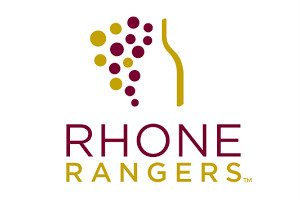 As Neyers was touching the void in Condrieu, that same season American vintners, led by an upstart group calling themselves the Rhône Rangers, had started plotting Syrah’s breathless rise to superstardom. Many of them had been converted to Syrah evangelists by encountering the great wines and winemakers of the Rhône. Some had even had the kind of experience Neyers had in Le Beau Rivage. But they also made some key decisions early on—only slightly off the mark—that eventually landed domestic Syrah in the market gutter.
As Neyers was touching the void in Condrieu, that same season American vintners, led by an upstart group calling themselves the Rhône Rangers, had started plotting Syrah’s breathless rise to superstardom. Many of them had been converted to Syrah evangelists by encountering the great wines and winemakers of the Rhône. Some had even had the kind of experience Neyers had in Le Beau Rivage. But they also made some key decisions early on—only slightly off the mark—that eventually landed domestic Syrah in the market gutter.
While the Rhône is generally thought of as having a warm Mediterranean climate, the villages of the northern Rhône are wind-whipped and cold, largely inhospitable places. In name, both Cornas (from the Celtic) and Côte-Rôtie (from the French) are translated as “roasted slope.” But the “roasted” part is only true in the context of its surroundings. The slopes are precipitously steep and face primarily south, making them “warm exposures in a generally cold region,” as the critic Jon Bonné put it in his book The New California Wine. Just missing the mark, enthusiastic California vintners in the 1990s mostly planted their Syrah on warm exposures in generally warm regions, leading to overt wines that emphasized high-alcohol and power and often lacked both the verve and the substance of their Old World forebears.
“It’s almost like Syrah got a little cursed, domestically,” winemaker Eric Sussman told me on a recent phone call. Under his Radio-Coteau label, Sussman makes a trio of lively and graceful bottlings from Sonoma Coast that stand at the forefront of this quiet revolution. He is one of a small but critical mass of U.S. winemakers who have dug in, in the years since Syrah was deemed D.O.A., and continued making gorgeous Syrah wines despite the dismal financial prospects for their efforts.
Freed from the hype of the late 1990s and the distorting pursuit of 100-point scores, a more authentic and spontaneous trend has developed. In the ashes of Syrah’s great collapse, a couple dozen minds have converged on a humble notion: not sameness, but difference.
Into the Headwinds

E. Guigal
In the late Aughts, Neyers and winemaker Tadeo Borchardt began a series of soul-searching trips back to the northern Rhône. Borchardt drilled their fellow vintners for minute details about the weather. The team became convinced they had to change tack: find the coldest and rockiest places that could still grow Syrah, and embrace whole-cluster fermentation, stems and all. They settled on a four-acre plot of Syrah in Gary’s Vineyard, in the Santa Lucia Highlands, which they say is “generally considered the coldest climate for Syrah in California.” With that they began moving toward the restrained, savory wines that inspired Neyers from the beginning.
Wells Guthrie, of Copain Wines (Twitter handle: @Gentaz_rulz), started dialing back his wines, focusing on the cooler hillsides of the Yorkville Highlands and the Anderson Valley and practicing Old World-inspired techniques. “Whole cluster fermentation allows the wine to obtain additional tannic structure from the stems rather than that of oak barrels,” according to the Copain website.
Duncan Arnot Meyers and Nathan Lee Roberts, of Arnot-Roberts, started producing their showstopping Syrah from the Clary Ranch, in the Petaluma Gap, what they describe as “an extremely cold and windy site.”
After working a stint at Bonny Doon Vineyard, in 1997, Sussman, too, had become more and more interested in the state’s marginal, coastal climates, where just enough sun shined to ripen the grapes he wanted to grow. (The phrase radio-coteau is a colloquial expression in the northern Rhône, where he spent a lot of time in the mid-90s, that translates to “broadcast from the hillside,” or roughly, by word of mouth). When he harvested his first Radio-Coteau vintage in 2002, in the far western aspects of the Sonoma Coast, he was already onto the ideas for Syrah that would come to propel today’s leading producers to their critical, if fiscally modest, successes.
“Of all the wines we make, Syrah is the most dynamic,” said Sussman, who also makes some of the most celebrated Pinot Noir and Chardonnay in Sonoma County. “We’re looking for layers. Wine that responds to air.”
It’s what you hear repeated time and again in talking to committed Syrah winemakers. While the public still struggles to embrace these wines, the people who make them see in them something essential and distinct, at their best suspended in a unique tension between sophistication and wildness.
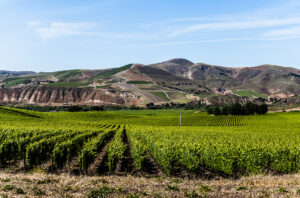
A Santa Barbara Syrah Vineyard
“Syrah’s kind of a winemaker’s wine,” Amy Christine, Master of Wine and co-owner of Holus Bolus wines, told me. She said the scope and range of flavors possible in Syrah is greater than it is in, for example, Pinot Noir. “If you lined up Syrah in Santa Barbara County and tasted them all side by side, you’d be like, Oh my God, these wines are all so different.”
Unlike Pinot, Syrah will grow just about anywhere you plant it. But like Pinot, Syrah only really thrives in cool climates with poor soils, holding its natural vigor in check. The consensus is that many of California’s early Syrah enthusiasts missed this critical distinction. By contrast, Christine and her husband Peter Hunken leased the most marginal slope of land they could find, a five-acre cow pasture they now call The Joy Fantastic, with the western-most Syrah plantings inside the Sta. Rita Hills AVA. “I wanted to know what Syrah would taste like if it was planted there,” she said. “Like, what the heck will this do if it’s this far west?”
Thankfully, they taste different!
In the course of researching this article, I drank about a case of varietal Syrah wines—from Côte-Rôtie, Cornas, Sonoma Coast, Ballard Canyon, Anderson Valley, Adelaide Hills, Ardeche, Crozes-Hermitage, and a few more generic bottlings in between. I got lucky: All of them were good. A few were excellent, including the Arnot-Roberts Que Syrah, Domaine Vincent Paris Cornas Granit 60, and Radio-Coteau Sonoma Coast Syrah. The Holus Bolus leapt out from the pack, however, not with the most substance or the greatest complexity, but with the most distinctive sense of itself. Playful, buoyant, pulsing with energy, and fuming with cracked pepper aromas, it sang in a different key.

Head of Wine, Vanessa Conlin, MW in the Northern Rhône
I was reminded of a passage from Kermit Lynch’s Adventures on the Wine Route, in the chapter on the northern Rhône: “For [today’s wine critics], big means good, light means less good; serious means good, playful is less good. What a humorless way to look at things. Which deity handed down the law that serious, heavy wines are better than gay, playful wines? It certainly wasn’t Bacchus.”
Today’s critics aren’t nearly as staunch in their obsession with big, serious wines as they were when that passage was written. But I wonder if there isn’t a lingering residue. For many years the thinking went: If big is good, and Syrah can be made as big as you want, then good Syrah is naturally very big indeed. Fed this line of thinking, people tasted that Very Big Syrah and rejected it. Because the truth is a lot of it sucked.
But if ever there were a grape that could not be pigeonholed! Syrah isn’t one thing. It isn’t even two things. As so many of the people I talked to told me, it is one of the most purely expressive grapes a winemaker can work with, especially when embraced as such.
This is sometimes seen as having contributed to its market failures, confusing the American consumer with too much difference. But why can’t that wildness be a brand of its own? I didn’t taste a single bottle that struck me as very much like the others. Only one, the Stolpman Vineyards Estate Grown Syrah, was what I would call “Big,” and that was nonetheless delicious on its own terms, washing down a dry-rubbed pork chop. Only the Vincent Paris stained my teeth purple, and what a joy to brush away the stains half-drunk on its feral charm. What brought these wines together as a group was their fundamental transparency, paradoxically unfathomable—the need to explore them further and further to see what I’d find in the next glass.
“Thank God they taste different!” Lynch wrote, continuing his rant on the misinterpretation of northern Rhône Syrah. “One of the miracles of French wine, one reason it is so endlessly enchanting, is its diversity, even within the same region employing the same grape variety.” The same can be said of California, and never more so than when discussing Syrah.
When Bruce Neyers started working in wine, in Berkeley in the early 1970s, the term “Hermitage” was still a lingering reference to a wine additive product from 20 years earlier. The region’s renaissance was already well underway, but its American reputation lagged. Today, U.S. winemakers who have no expectation of broad commercial success with their Syrah wines are going about their business nonetheless, making some of the most expressive and essential wines available today. And again, its reputation lags.
Today’s market is far more varied than ever before. Any one category of wine competes with a hundred others. But at the same time, a lot of vintners have figured out what it takes to make truly great Syrah and continue to ask themselves the hard questions, venturing ever deeper into the viticultural margins in search of the miraculous. They stand at the precipice of something phenomenal, the possibility of a real golden age where Syrah lives and dies on its own terms.
If only people knew to expect the unexpected, to embrace the adventure, Syrah might live in the world just where it belongs. Wouldn’t that be nice.
W. S. Lyon writes about wine, science, and books. He lives in New Jersey.

